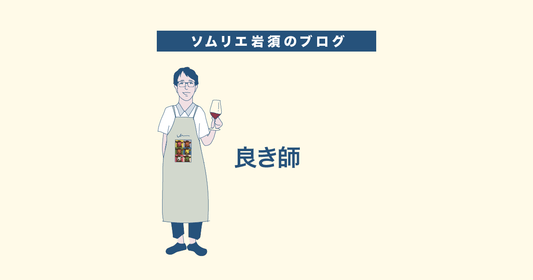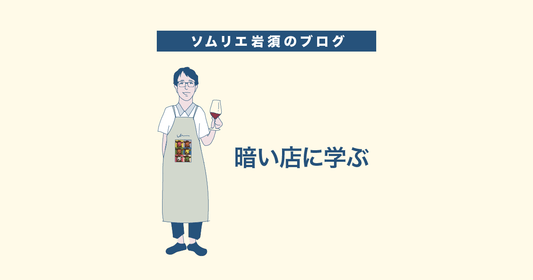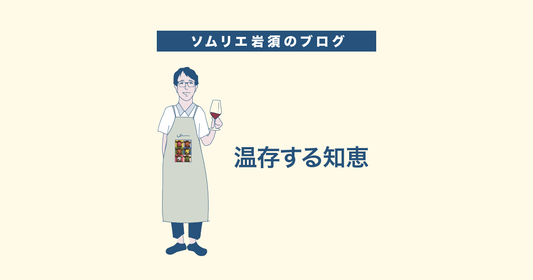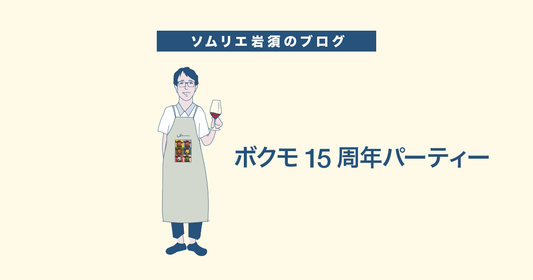
The headquarters of Bokumo Wine and Bokumo is located in Sakae, Nagoya City, Aichi Prefecture.
Today I'd like to talk about Sakae.
For those of you with no connection to Nagoya, the word Sakae may not conjure up much of an image, but to put it simply, Sakae is Nagoya's busiest entertainment district.
There are several department stores, lots of restaurants, a long strip of park, and a TV tower in the middle.
When I was in junior high school, Sakae was an unknown big city to me.
One day, a friend who likes fashion invited me to go shopping for clothes in Nagoya, saying, "There's a good store there." I was really excited, thinking, "Wow, finally I'm going to Sakae for the first time," but the red Meitetsu train took us to Eska, the underground shopping mall in Nagoya Station, instead of Sakae.
Yes, for a boy with a short haircut from a rural town in Aichi, Nagoya Station, commonly known as Meieki (pronounced Meeki, not Meieki), was the Nagoya that was just barely acceptable. Sakae was a foreign land where only the upper class lived. I thought I couldn't step in without a passport (that's a bit of an exaggeration).
In that respect, Eska in Nagoya Station is good. The Seikatsu Souko next to it is also good. It's easy to enter and friendly. It's just right in that it's not too sophisticated, which is similar to our friends Jusco and Uny. I felt safe in the Nagoya Station area. That's the feeling I got. Now that I think about it, it's quite cute.
(Maybe what Ikebukuro is to people in Saitama, Meieki is to people in the suburbs of Aichi, Gifu, and Mie.)
The first time I set foot in Sakae was when I entered university.
Since I started living alone in Endoji Shopping Street, which is close to both Nagoya Station and Sakae, I started getting around Sakae on my bicycle and I suddenly felt like I had joined the club of city dwellers.
At that time, the area around Sakae's TV tower was a fairly dangerous area at night, and even when I was just walking around, suspicious foreigners would often approach me and ask, "What do you want? Whatever it is."
That feeling of "having come to a dangerous place" was incredibly refreshing for me as a country boy.
After that, I started working at a radio station very close to Sakae, and opened a shop on the outskirts of Sakae on 5th Street, where I've been ever since.
The boy with the short haircut who bought his first pair of jeans at Esca is now selling unknown New Zealand wine in an unknown big city. Time has flown.
Now, about Sakae.
Actually, I haven't been feeling well lately.
The reason was the extraordinary excitement at its rival, Meieki Station, two stations away. Originally, Meieki was a terminal station that was friendly to us country folk. As mentioned above, it had a somewhat rustic image, but starting with the opening of JR Central Towers in 2000, large buildings such as Midland Square, Dai Nagoya Building, Global Gate, JR Gate Tower, and JP Tower have opened one after another. It has undergone a major transformation.
For a long time, Sakae was considered the center of Nagoya, but over the past decade or so, offices and stores have suddenly been concentrated in Meieki, and now Meieki has taken over its position as the center of the city.
So, anyone who has been running a store in Sakae for more than 10 years feels that customers have been flocking to Nagoya Station.
This was before the coronavirus outbreak, but in Meieki 3-chome, restaurants were full even on weekdays, and queues were common. On Fridays, it was already a festival. It was incredibly exciting all night long.
As a result, the people who remain in Sakae are those who think that "a second downtown area is just right." I think that customers who "don't like the noisy atmosphere of Nagoya Station" or "want independent stores instead of chain stores" are choosing Sakae (and the surrounding areas such as Fushimi, Shinsakae, and Imaike).
By the way, for us in the Sakae group, it wasn't just the customers who were inconvenienced by the flow, but also the part-time staff.
New stores are opening one after another in Nagoya Station, and they are constantly recruiting with high hourly wages. Because it is a terminal station, access is excellent, and it is easy to gather staff for newly opened and high hourly wage stores. People who used to work in Sakae switched to Nagoya Station one after another.
Fortunately, Bokumo has been blessed with a good relationship and has a continuous stream of excellent part-time staff. I think we are very lucky. However, when I talk to other store owners, I hear that it is quite difficult to manage staff in Sakae.
And then Corona happened.
Unfortunately, some of the stores I know in Sakae have chosen to close. However, many others are doing their best to hang on. Ours is also doing its best.
Now that the epidemic has ended, it seems like customers are slowly returning, but to be honest, we're still a long way from being back to normal. I think everyone is worried about what will happen in the future, but I have one thing that makes me feel positive.
The plan is to "counterattack Mei Station through redevelopment in Sakae."
First of all, in 2020, the northern area of Hisaya-odori Park was renovated and remodeled beautifully as "Hisaya-odori Park." This is quite large. The park, which used to look like a dense forest, has suddenly become a bright and open space.
And the Chunichi Building, which was a symbol of Sakae, is currently undergoing reconstruction and is scheduled to open in 2024 (in fact, I was recently invited to become a tenant there).
The decision has been made to redevelop Sakae Hiroba, a vacant lot located to the north of Mitsukoshi, and a 41-story high-rise building will be built there. It is scheduled to be completed in 2026.
Furthermore, there seem to be plans to rebuild both Mitsukoshi and Matsuzakaya, so I think it's safe to say that we'll see a rapid increase in new buildings in Sakae from here on out.
And connecting these new buildings is Hisaya Odori Park. The great thing about Sakae is that the park and the buildings are connected. You can walk between the wide, different zones from north to south. Sakae is a fun town to walk around.
The southern area of the park has been an essential festival venue since before COVID-19, but it looks like it's going to be even more functional in the future. It's still in the stage of a roundtable discussion with experts, but according to the published materials, it will be "made to have attractive features that will attract visitors from Japan and abroad." It seems likely that the range of event genres will be wider in the future. As someone who lives near this area, I'm looking forward to seeing wine events and New Zealand events being held there.
So, just by having this announced, there are plenty of elements that will liven up Sakae again.
I've been waiting for this moment. After 10 years of hard work, Sakae has endured the onslaught of Meieki, and now it's time for it to make a comeback.
That's right, I think after the coronavirus pandemic, or rather with the coronavirus pandemic, we will probably enter an era where people dislike crowds .
For the time being, I think everyone will be concerned about droplets produced when people talk, and I don't think the number of people who feel uncomfortable even when strangers are in close proximity talking to each other will decrease anytime soon.
I think for a while, many people will still prefer going outside to crowded bars, or to events in parks and eating and drinking at food stalls.
If that's the case, the park events in Sakae will probably be a big hit. I think Sakae, where people can go back and forth between the park and the downtown area, might be a town well suited to the COVID-19 pandemic.
By the way, Bokumo is located in the quiet Sakae 5-chome, just a short walk from the park. After a month of renovation, we found that with the current interior, even if it is full, it does not become "super crowded". For example, how about playing in the park from noon to evening, and then relaxing with a New Zealand wine when the sun goes down? If possible, I would be grateful if you could add a bar where you can drink slowly to your repertoire in the era of with corona.
Sakae's counterattack is about to begin.
What will happen to the flow of people? Will people come to Sakae again from rival Meieki Station? I want to keep my shop in Sakae for as long as possible so I can see for myself.
This week's pairing
Speaking of Nagoya, I received this.
"Shachi Monaka" from the original Shachi Monaka main store.
This is what freelance writer Toshiyuki Otake brought to us to celebrate the renewal.

The company has been hit hard by the coronavirus pandemic, but I've heard that it is fighting back with the ideas of its young fourth-generation president.
The taste is very simple and nostalgic, the "Monaka" does not disappoint.
Of course, matcha is the best partner for these kinds of Japanese sweets, but they also go well with wine like this.
Seyfried Sweet Agnes Riesling (375ml) 2016
The pairing of sweet sweets and sweet dessert wine is quite good. Especially with red bean paste, the taste of the beans really stands out, making it feel like you're eating something different. Give this interesting international marriage a try.

 →
→ 



